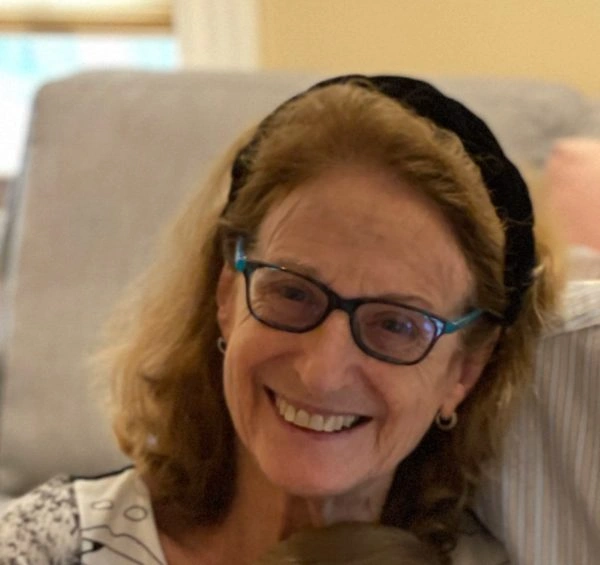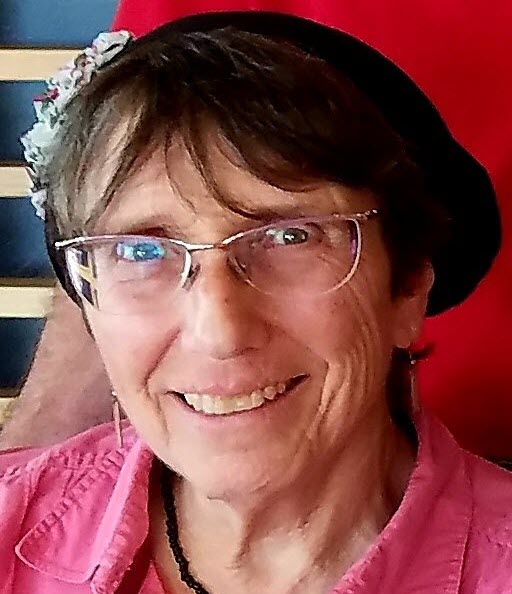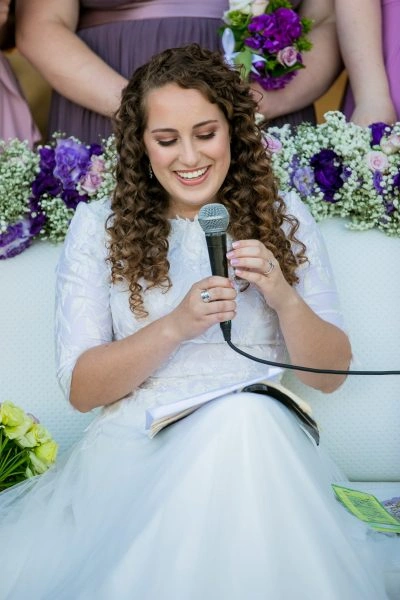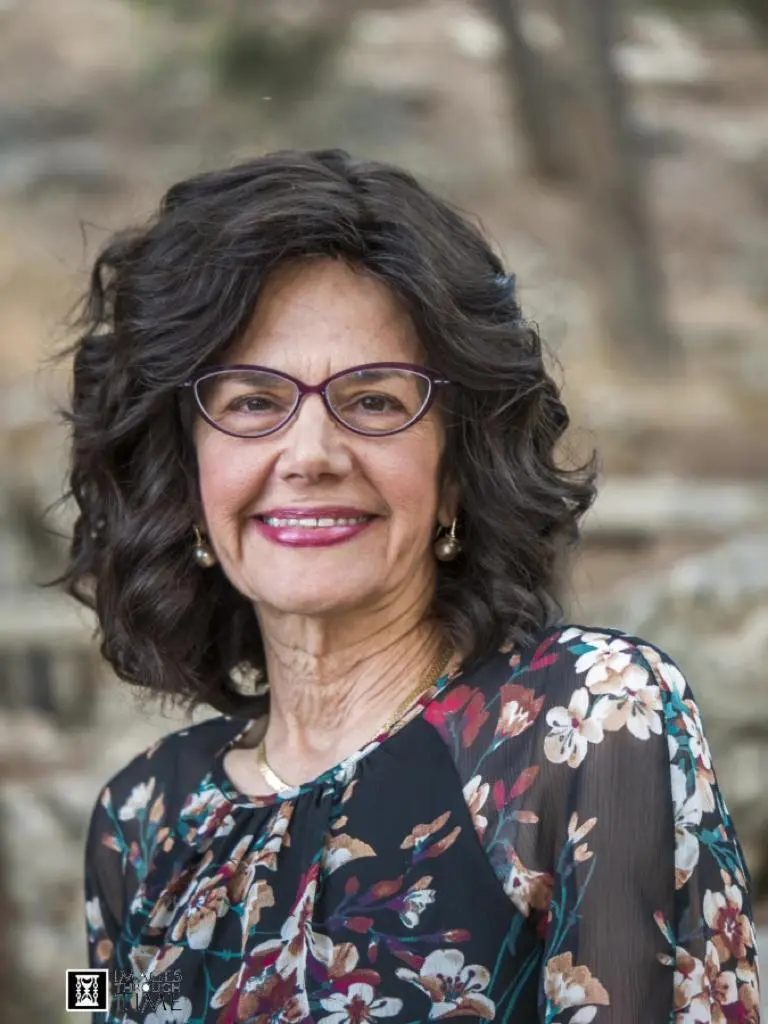Eruvin 24
בְּטִיל לֵיהּ לְגַבַּי רוּבָּה, וְהָוֵה לֵיהּ קַרְפֵּף יוֹתֵר מִבֵּית סָאתַיִם — וְאָסוּר.
is nullified relative to the greater part, and it is as though the karpef were entirely sown. And therefore, it is regarded as a karpef greater than two beit se’a, in which it is prohibited to carry.
אֶלָּא אִי אִיתְּמַר הָכִי אִיתְּמַר: הָא מִיעוּטָא — שָׁרֵי. אָמַר רַב הוּנָא בְּרֵיהּ דְּרַב יְהוֹשֻׁעַ: לָא אֲמַרַן אֶלָּא דְּלָא הָוֵי בֵּית סָאתַיִם, אֲבָל בֵּית סָאתַיִם — אָסוּר.
Rather, if this was stated, this is what was stated by Rav Huna, son of Rav Yehoshua: If the greater part of the karpef was sown, it is prohibited to carry within it. It follows that if only a minor part of the karpef was sown, it is permitted to carry within it. Rav Huna, son of Rav Yehoshua, said: We said that it is permitted to carry only if the sown section is not as large as two beit se’a, however, if it is at least two beit se’a, it is prohibited to carry anywhere in the karpef, even though most of it is not sown.
כְּמַאן? כְּרַבָּנַן.
The Gemara asks: According to whose opinion was this stated? It is according to the opinion of the Rabbis, who disagree with Rabbi Shimon and say that a karpef and a courtyard are regarded as separate domains, so that it is prohibited to carry from one to the other.
וְרַב יִרְמְיָה מִדִּיפְתִּי מַתְנֵי לְקוּלָּא: הָא מִיעוּטָא — שְׁרֵי, אָמַר רַב הוּנָא בְּרֵיהּ דְּרַב יְהוֹשֻׁעַ: לָא אֲמַרַן אֶלָּא בֵּית סָאתַיִם, אֲבָל יוֹתֵר מִבֵּית סָאתַיִם — אָסוּר. כְּמַאן? כְּרַבִּי שִׁמְעוֹן.
And Rav Yirmeya from Difti would teach this matter as a leniency, as follows: It was stated that if the greater part of the karpef was sown, it is prohibited to carry within it. From here it follows that if only a minor part was sown, it is permitted to carry within it. Rav Huna, son of Rav Yehoshua said: We only said that it is permitted to carry if the sown section is not more than two beit se’a, but if it is more than two beit se’a, it is prohibited to carry. According to whose opinion was this stated? It was according to the opinion of Rabbi Shimon.
נָטַע רוּבּוֹ — הֲרֵי הוּא כְּחָצֵר, וּמוּתָּר. אָמַר רַב יְהוּדָה אָמַר אֲבִימִי: וְהוּא שֶׁעֲשׂוּיִין אִצְטַבְּלָאוֹת. וְרַב נַחְמָן אָמַר: אַף עַל פִּי שֶׁאֵין עֲשׂוּיִין אִצְטַבְּלָאוֹת.
It was stated earlier that if the greater part of the karpef was planted with trees, it is considered like a courtyard, and it is permitted to carry. Rav Yehuda said that Avimi said: This is only if the trees were planted in rows [itztablaot], the customary manner of planting ornamental trees in a courtyard. But if they were arranged differently it is considered an orchard, which is not made for dwelling, and where it is prohibited to carry. But Rav Naḥman said: This applies even if they were not planted in rows, as people commonly plant trees in any arrangement in the courtyards of their houses.
מָר יְהוּדָה אִקְּלַע לְבֵי רַב הוּנָא בַּר יְהוּדָה. חֲזַנְהוּ לְהָנְהוּ דְּלָא עֲבִידִי אִצְטַבְּלָאוֹת, וְקָא מְטַלְטְלִי בְּגַוַּיְיהוּ. אֲמַר לֵיהּ: לָא סָבַר לַהּ מָר לְהָא דַּאֲבִימִי? אֲמַר לֵיהּ: אֲנָא כְּרַב נַחְמָן סְבִירָא לִי.
Mar Yehuda happened to come to the house of Rav Huna bar Yehuda, where he saw certain trees that were not planted in rows, and people were nevertheless carrying among them. Mar Yehuda said to Rav Huna: Doesn’t the Master hold in accordance with this opinion of Avimi? Rav Huna said to him: I hold like the opinion of Rav Naḥman, that it is permitted to carry even if the trees are not planted in rows.
אָמַר רַב נַחְמָן אָמַר שְׁמוּאֵל: קַרְפֵּף יוֹתֵר מִבֵּית סָאתַיִם שֶׁלֹּא הוּקַּף לְדִירָה, כֵּיצַד הוּא עוֹשֶׂה? פּוֹרֵץ בּוֹ פִּירְצָה יוֹתֵר מֵעֶשֶׂר, וְגוֹדְרוֹ וּמַעֲמִידוֹ עַל עֶשֶׂר, וּמוּתָּר.
Rav Naḥman said that Shmuel said: With regard to a karpef that is greater than two beit se’a, and which was not enclosed from the outset for the purpose of residence, what should one do if he wishes to carry within it? He should make a breach in the fence larger than ten cubits, which nullifies the partition, and then fence it off and reduce the opening to only ten cubits, which thereby creates an entrance. He is then permitted to carry in the karpef, because it is now regarded as having been enclosed for the purpose of residence.
אִיבַּעְיָא לְהוּ: פָּרַץ אַמָּה וְגָדַר אַמָּה [וּפָרַץ אַמָּה וּגְדָרָהּ], עַד שֶׁהִשְׁלִימוֹ לְיוֹתֵר מֵעֶשֶׂר, מַהוּ?
The Gemara raises a dilemma: If he did not make the breach at once, but rather he breached one cubit and fenced off that same cubit, and then breached another cubit and fenced it off, until he completed the breaching and fencing off of more than ten cubits, what is the law?
אֲמַר לֵיהּ, לָאו הַיְינוּ דִּתְנַן: כׇּל כְּלֵי בַּעֲלֵי בָתִּים, שִׁיעוּרָן כְּרִמּוֹנִים.
He said to him: Is this not as we learned in a mishna: All ritually impure wooden utensils belonging to ordinary homeowners become ritually pure through breaking the utensil, if they have holes the size of pomegranates.
וּבָעֵי חִזְקִיָּה: נִיקַּב כְּמוֹצִיא זַיִת וּסְתָמוֹ, וְחָזַר וְנִיקַּב כְּמוֹצִיא זַיִת וּסְתָמוֹ, עַד שֶׁהִשְׁלִימוֹ לְמוֹצִיא רִמּוֹן מַהוּ?
And Ḥizkiya raised a dilemma: If a utensil was perforated with a hole large enough for an olive to emerge, and he sealed it, and then it was perforated again with a hole large enough for an olive to emerge, and he sealed it again, and this went on until the holes together completed a space large enough for a pomegranate to emerge, what is the halakha? In other words, is the ruling that because the sum of all the holes is the size of a pomegranate the utensil is pure, or is the ruling that it remains ritually impure because each hole was filled before the next hole was formed?
וַאֲמַר לֵיהּ רַבִּי יוֹחָנָן: רַבִּי, שָׁנִיתָה לָנוּ: סַנְדָּל שֶׁנִּפְסְקָה אַחַת מֵאׇזְנָיו וְתִיקְּנָהּ — טָמֵא מִדְרָס.
Rabbi Yoḥanan his student said to him: Master, you taught us that with regard to a sandal that became ritually impure by impurity imparted by the treading of a zav, and one of its ears, i.e., straps, broke and he repaired it, it remains ritually impure with impurity imparted by treading [midras] and can still render people and utensils ritually impure. If one of a sandal’s straps is torn, it can still be used as a sandal, and therefore it does not lose its status as a utensil.
נִפְסְקָה שְׁנִיָּה וְתִיקְּנָהּ — טָהוֹר בָּהּ מִן הַמִּדְרָס, אֲבָל טָמֵא מַגַּע מִדְרָס.
If the second ear broke and he repaired it, it is ritually pure in the sense that it no longer renders other objects ritually impure as would a vessel that became a primary source of ritual impurity by means of impurity imparted by treading. However, the sandal itself is ritually impure due to contact with an object that became ritually impure with impurity imparted by treading, i.e., the sandal before its second strap ripped. Therefore, it can transmit ritual impurity to food and liquids.
וַאֲמַרְתְּ עֲלַהּ: מַאי שְׁנָא רִאשׁוֹנָה — דְּהָא קָיְימָא שְׁנִיָּה? שְׁנִיָּה נָמֵי — הָא קָיְימָא רִאשׁוֹנָה?!
And you said about this halakha: What is different in a case where the first ear breaks, that the sandal remains impure? It is because the second one is intact. However, when the second ear breaks, the first ear is intact; so how does the sandal lose its utensil status?
וַאֲמַרְתְּ לַן עֲלַהּ: פָּנִים חֲדָשׁוֹת בָּאוּ לְכָאן. הָכָא נָמֵי, פָּנִים חֲדָשׁוֹת בָּאוּ לְכָאן.
And then you said to us with regard to this that the reason it is no longer a utensil is because a new entity has arrived here. The legal status of the sandal with the two repaired ears is not that of the original sandal; it is a new sandal. Here, too, with regard to a utensil that was perforated several times, where the sum of all the holes adds up to the size of a pomegranate, let us say that a new entity has arrived here, as the entire area of the hole is completely new, and the utensil is no longer the same utensil that had been ritually impure.
קָרֵי עֲלֵיהּ: לֵית דֵּין בַּר אִינָשׁ. אִיכָּא דְּאָמְרִי: כְּגוֹן דֵּין בַּר נַשׁ.
Ḥizkiya was so impressed by Rabbi Yoḥanan’s comment that he exclaimed about him: This is not a human being; rather, he is an angel, as he is capable of resolving a problem that I struggle with, from something that I myself taught. Some say that he said: This is an ideal human being. This parallel analysis teaches that if one breached one cubit and fenced it off, breached another cubit and fenced it off, and continued this way until he breached and fenced off more than ten cubits, then this is effective, and he need not breach more than ten meters at once.
אָמַר רַב כָּהֲנָא: רְחָבָה שֶׁאֲחוֹרֵי הַבָּתִּים — אֵין מְטַלְטְלִין בּוֹ אֶלָּא בְּאַרְבַּע אַמּוֹת.
Rav Kahana said: A fenced-in yard located behind a group of houses, which is used to store objects not in regular use and which measures more than two beit se’a, is not treated as a full-fledged private domain. Therefore, inside it, one may carry objects a distance of only four cubits.
וְאָמַר רַב נַחְמָן: אִם פָּתַח לוֹ פֶּתַח — מוּתָּר לְטַלְטֵל בְּכוּלּוֹ, פֶּתַח מַתִּירוֹ. וְלָא אֲמַרַן אֶלָּא שֶׁפָּתַח וּלְבַסּוֹף הוּקַּף, אֲבָל הוּקַּף וּלְבַסּוֹף פָּתַח — לָא.
Rav Naḥman said: If one opened an entrance to it from the house, it is permitted to carry throughout the entire area, because the entrance permits it, allowing it to be considered as part of the house. And we stated this allowance only where he opened the entrance and afterward fenced in the area; but if he first fenced it in and only afterward opened the entrance, he may not carry throughout the yard.
פָּתַח וּלְבַסּוֹף הוּקַּף פְּשִׁיטָא! לָא צְרִיכָא, דְּאִית בֵּיהּ בֵּי דָרֵי. מַהוּ דְּתֵימָא: אַדַּעְתָּא דְּבֵי דָרֵי עַבְדֵיהּ. קָא מַשְׁמַע לַן.
The Gemara raises a difficulty: If he first opened the entrance and afterward fenced in the area, it is obvious that it is permitted to carry throughout the yard, because it is clear that the area was enclosed for the entrance, i.e., in order to use it from the house. The Gemara answers: This ruling is necessary only in the case where there is a threshing floor in the yard. This is because you might have said that he made the entrance with the threshing floor in mind, and not so that he would be able to use the entire yard. He therefore comes and teaches us that the entrance renders it permitted to carry in the yard in all cases.
קַרְפֵּף יוֹתֵר מִבֵּית סָאתַיִם שֶׁהוּקַּף לְדִירָה וְנִתְמַלֵּא מַיִם, סְבוּר רַבָּנַן לְמֵימַר כִּזְרָעִים דָּמוּ — וַאֲסִיר.
The Gemara considers a new case: With regard to a karpef measuring more than two beit se’a, which had been enclosed for the purpose of residence but became filled with water, by floods or any other cause, the Rabbis thought to say that the water is considered like seeds. This means that the karpef is regarded as if it were sown with seeds, so that it is prohibited to carry. It is no longer considered as having been enclosed for the purpose of dwelling, since it is not normal to live in a place filled with water.
אֲמַר לְהוּ רַב אַבָּא אֲבוּהּ דְּרַב בְּרֵיהּ דְּרַב מְשַׁרְשְׁיָא: הָכִי אָמְרִינַן מִשְּׁמֵיהּ דְּרָבָא: מַיִם כִּנְטָעִים דָּמוּ, וּשְׁרֵי.
Rav Abba, father of Rav, son of Rav Mesharshiya, said: We say in the name of Rava as follows: Water is considered like planted trees, so that one is permitted to carry. A courtyard filled with water is still suitable for dwelling, since the water benefits the residents of the courtyard.
אָמַר אַמֵּימָר: וְהוּא דְּחַזְיִין לְתַשְׁמִישְׁתָּא, אֲבָל לָא חַזְיִין לְתַשְׁמִישְׁתָּא — לָא.
Ameimar said: This ruling applies only if the water is fit for its regular use, i.e., for drinking, because in that case it provides for the needs of residence. However, if the water is not fit for use, then it is not considered like planted trees. Therefore, the karpef is no longer considered enclosed for the purpose of residence, and it is prohibited to carry in the karpef.
אָמַר רַב אָשֵׁי: וּדְחַזְיִין לְתַשְׁמִישְׁתָּא נָמֵי לָא אֲמַרַן אֶלָּא שֶׁאֵין בְּעוֹמְקוֹ יוֹתֵר מִבֵּית סָאתַיִם, אֲבָל אִם יֵשׁ בְּעוֹמְקוֹ יוֹתֵר מִבֵּית סָאתַיִם — אָסוּר.
Rav Ashi said: And even where the water is fit for use, this ruling applies only if the water is not ten handbreadths deep over an area greater than two beit se’a; but if the water is ten handbreadths deep over an area greater than two beit se’a, it is prohibited to carry in it, as in such a case the karpef is no longer considered enclosed for the sake of dwelling.
וְלָאו מִילְּתָא הִיא, מִידֵּי דְּהָוֵה אַכַּרְיָא דְפֵירֵי.
The Gemara comments: And it is not so, just as it is in the case of a pile of fruit, as even if the pile of fruit is very large, the karpef does not lose its status as having been enclosed for the purpose of residence.
הָהִיא רְחָבָה דַּהֲוַאי בְּפוּם נַהֲרָא, דְּחַד גִּיסָא הֲוָה פְּתִיחַ לְמָתָא, וְחַד גִּיסָא הֲוָה פְּתִיחַ לִשְׁבִיל שֶׁל כְּרָמִים, וּשְׁבִיל שֶׁל כְּרָמִים הֲוָה סָלֵיק לְגוּדָּא דְנַהֲרָא.
The Gemara relates: There was a certain yard in the town of Pum Nahara that was larger than two beit se’a and that had not been enclosed for the purpose of residence. One of its sides opened to an alleyway in the town, and the other opened to a walled path between the vineyards, and that vineyard path led to the bank of a river ten handbreadths high, which is considered a partition.
אָמַר אַבָּיֵי: הֵיכִי נַעֲבֵיד? לַעֲבֵיד לֵיהּ מְחִיצָה אַגּוּדָּא דְנַהֲרָא — אֵין עוֹשִׂין מְחִיצָה עַל גַּבֵּי מְחִיצָה.
Abaye said: What shall we do to permit carrying in the yard, which is a karmelit, without having to make a breach in one of its walls wider than ten cubits and then fence it up again? Shall we construct a partition for it on the river bank, so that the vineyard path is surrounded by partitions on all sides? This is not a viable solution, as one cannot construct an effective partition on top of another partition that already exists, and the river bank is considered a partition relative to the river.
וְלַעֲבֵיד לֵיהּ צוּרַת הַפֶּתַח אַפּוּמָּא דִּשְׁבִיל שֶׁל כְּרָמִים — אָתוּ גַּמְלֵי שָׁדְיָין לֵיהּ.
Shall we arrange a doorframe at the mouth of the vineyard path? That is also not an effective solution in this case, for the camels that walk down this path in order to drink water from the river will come and knock it over.
אֶלָּא אָמַר אַבָּיֵי: לֶיעְבֵּיד לֶחִי אַפִּיתְחָא דִּשְׁבִיל שֶׁל כְּרָמִים, דְּמִגּוֹ דְּמַהְנְיָא לִשְׁבִיל שֶׁל כְּרָמִים, מְהַנֵּי נָמֵי לִרְחָבָה.
Rather, Abaye said: We should arrange a side post at the opening of the vineyard path to the yard, since as it is effective for the vineyard path, to allow one to carry on the path, as it is no longer breached into a karmelit, it is also effective for the yard, and the side post will be considered an additional partition that renders it permitted to carry in the yard.
אֲמַר לֵיהּ רָבָא: יֹאמְרוּ לֶחִי מוֹעִיל לִשְׁבִיל שֶׁל כְּרָמִים דְּעָלְמָא.
Rava said to him: If so, people will say that a side post is effective in permitting one to carry in a vineyard path generally, and this will cause the public to err, as vineyard paths are usually open at both ends and do not lead to a river or the like.
אֶלָּא אָמַר רָבָא: עָבְדִינַן לֵיהּ לֶחִי לְפִיתְחָא דְמָתָא, דְּמִגּוֹ דְּמַהְנֵי לֵיהּ לֶחִי לְמָתָא, מַהְנֵי נָמֵי לִרְחָבָה.
Rather, Rava said: They should arrange a side post at the opening of the yard to the town, as since the side post is effective and is considered a partition for the town, it is also effective for the yard, to permit one to carry within it.
הִלְכָּךְ: טַלְטוֹלֵי בְּמָתָא גּוּפַהּ — שְׁרֵי. טַלְטוֹלֵי בִּרְחָבָה גּוּפַהּ — שְׁרֵי. מִמָּתָא לִרְחָבָה וּמֵרְחָבָה לְמָתָא, פְּלִיגִי בַּהּ רַב אַחָא וְרָבִינָא: חַד אָסַר וְחַד שָׁרֵי.
Therefore, in summary, it is permitted to carry within the town itself and to carry within the yard itself. However, with regard to carrying from the town to the yard or from the yard to the town, Rav Aḥa and Ravina disagree: One prohibits doing so and the other permits it.























